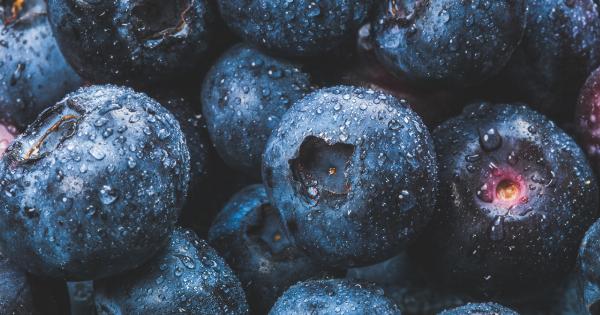There is a common misconception that fruits and vegetables are not filling enough to satisfy hunger and keep you full for long periods.
This myth has been perpetuated by various factors, including misleading advertisement campaigns and misinterpretation of scientific research. In reality, fruits and vegetables are not only incredibly nutritious but can also play a crucial role in achieving and maintaining a healthy weight.
In this article, we will debunk the fruits and vegetables hunger myth by examining scientific evidence and providing practical tips for incorporating more plant-based foods into your diet.
Understanding the hunger factor
Hunger is a complex mechanism influenced by multiple factors, including the volume and composition of the food we consume.
While it is true that some foods are more satiating than others, labeling all fruits and vegetables as inadequate in preventing hunger is a misconstrued notion. Fruits and vegetables are rich in dietary fiber, which is known to enhance satiety and promote feelings of fullness. Moreover, they also contain water, which contributes to their overall volume and helps create a sense of satisfaction when eaten.
The role of fiber
Fiber is an essential component of a well-balanced diet and is found abundantly in fruits, vegetables, whole grains, and legumes. It moves through the digestive system relatively intact, adding bulk to the stool and promoting regular bowel movements.
Within the stomach and intestines, fiber has a satiating effect and helps regulate appetite by slowing down gastric emptying. This means that when you consume foods high in fiber, such as fruits and vegetables, you stay fuller for longer periods.
Studies have consistently shown that diets high in dietary fiber are associated with lower body weight and reduced risk of obesity.
Furthermore, individuals who consume more fruits and vegetables tend to have healthier body weights compared to those who primarily rely on processed foods. The high-fiber content of fruits and vegetables not only contributes to their satiating effect but also helps regulate blood sugar levels, which can prevent overeating and excessive snacking.
Volume vs. caloric content
Another factor contributing to the hunger myth surrounding fruits and vegetables is the comparison of their caloric content to other more energy-dense foods.
While fruits and vegetables are generally lower in calories compared to processed and high-fat foods, they make up for it by their high water and fiber content. The volume of food we consume plays a significant role in how full we feel, regardless of its caloric content.
Therefore, even though fruits and vegetables may be lower in calories, their high volume and fiber content can make them just as satisfying as higher-calorie options.
It is important to note that the caloric density of a food does not determine its ability to satisfy hunger. Foods high in fat and sugar may provide more energy per gram but are often less filling due to their low fiber and high processed content.
On the other hand, fruits and vegetables have a low caloric density, meaning they provide fewer calories per gram, and can help you feel satisfied without excessive calorie intake.
The importance of mindful eating
In addition to the nutritional components of fruits and vegetables, the way we eat and approach our meals also affects our sense of fullness.
Mindful eating involves being fully present and engaged in the eating experience, paying attention to hunger and satiety cues, and savoring the flavors and textures of food. By incorporating mindful eating practices, we can better regulate our portion sizes and prevent overeating.
When consuming fruits and vegetables, it is important to take the time to chew thoroughly and savor each bite.
By doing so, we not only allow our bodies to properly digest and assimilate the nutrients but also give our brains the time to register the sensation of fullness and satiety. Mindful eating practices can help bridge the perceived gap between the hunger myth and the ample satiety offered by fruits and vegetables.
Practical tips for incorporating more fruits and vegetables
Increasing your fruit and vegetable intake does not have to be a daunting task. Here are some practical tips to help you incorporate more of these nutritious foods into your daily diet:.
- Start your day with a fruit smoothie or add chopped fruits to your cereal or yogurt.
- Include a variety of vegetables in your lunch and dinner meals, such as mixed salads, stir-fries, or roasted vegetables.
- Keep a bowl of fresh fruits readily available on your kitchen counter or workplace for a quick and nutritious snack.
- Experiment with different cooking methods, such as steaming, grilling, or sautéing, to enhance flavors and textures.
- Try swapping traditional pasta or rice with spiralized vegetables or cauliflower rice for a lower-calorie, high-fiber alternative.
- Incorporate fruits and vegetables into your favorite recipes, such as adding spinach to pasta dishes or blending vegetables into sauces and soups.
- Explore farmers’ markets or join a community-supported agriculture (CSA) program to discover locally grown and seasonal produce.
- Get creative with fruit and vegetable combinations by making colorful salads or fruit-based desserts.
- Consider keeping a food diary to track your fruit and vegetable consumption and identify areas where you can make improvements.
- Involve friends and family in cooking and meal preparation to make the experience more enjoyable and increase your exposure to new fruit and vegetable options.
Conclusion
The notion that fruits and vegetables are not filling enough to combat hunger is a myth that undermines their nutritional value and contribution to satiety.
Numerous studies have shown that these plant-based foods play a crucial role in weight management, thanks to their high fiber and water content. The volume they provide and the satiating effect of fiber make fruits and vegetables an excellent choice for those seeking to achieve and maintain a healthy weight.
By incorporating mindful eating practices and making practical changes to our daily routines, we can easily increase our fruit and vegetable intake and reap their many nutritional benefits.






























